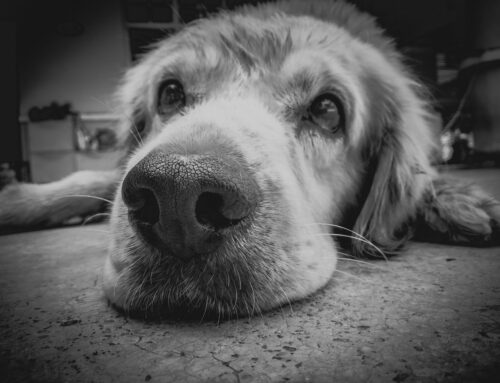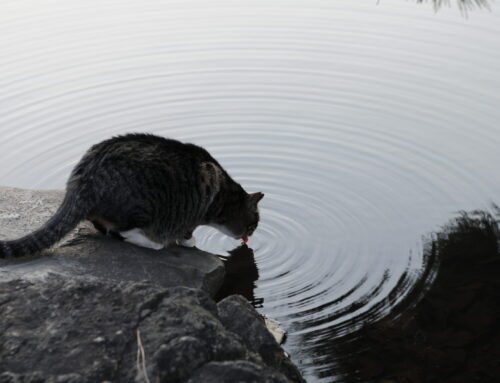An appropriate diet is essential for a dog or cat to develop normally. Among the several factors that affect a pet’s dietary requirements are the following:
Gender: Intact or Neutered
Gender can have little effect on a pet’s dietary needs, although this effect is rarely substantial.
Depending on the animals’ reproductive stage, there may be modest differences in the dietary requirements of male and female pets. For instance, pregnant or nursing females may require more calories and nutrients to support the growth and development of their offspring. In contrast, neutered animals may need fewer calories to maintain a healthy weight.
The mineral needs of certain animals, such as cats, may differ by gender. Men may be more susceptible to urinary tract issues, which can be managed with diets controlling their food’s mineral content.
Pets’ Physiological State
The physiology of a pet, including its age, growth stage, reproductive status, and health condition, can significantly influence its dietary requirements. Here are some illustrations:
Age: Depending on their age, dogs’ dietary requirements vary. While older animals may require fewer calories and more nutrients to sustain their aging bodies, puppies and kittens require higher quantities of protein, fat, and calories to support their growth and development.
Reproductive status: Pregnant or breastfeeding Pets require additional calories, protein, and other nutrients to support the growth and development of their young. Male and female dogs who have been spayed or neutered may require fewer calories to maintain a healthy weight.
To regulate their condition and maintain an exceptional health, pets with certain medical conditions, such as diabetes, renal illness, or allergies, may require specialized diets. For example, pets with renal issues may require a low-protein and phosphorus diet, while pets with food allergies may require a novel protein or hydrolyzed diet.
Depending on a pet’s level of activity, its dietary requirements may vary. Extremely active pets, such as working dogs or animals participating in sports or agility training, may require a higher caloric and protein intake to satisfy their energy requirements.
Its physical condition may also impact the dietary needs of an animal. Underweight pets may require a higher-calorie diet to gain weight, whereas overweight or obese pets may require a lower-calorie diet to lose weight.
Level of Activity of your pet
The degree of physical activity or amount of exercise a pet receives can substantially affect its dietary requirements. Here are some instances of how a pet’s level of exercise might alter its diet:
Pets with high activity levels, such as working dogs or animals participating in sports or agility training, may require more calories to satisfy their energy needs. Less active or sedentary pets may require fewer calories to maintain a healthy weight.
For the growth and repair of muscles and tissues, less active pets may require less protein, while more active pets may require more protein.
Active pets may require more fat to provide the sustained energy they need during exercise, while less active pets may require less fat.
Active pets may require extra water to be hydrated during exercise, especially in hot or humid conditions.
No matter how busy they are, dogs must consume a balanced diet with all the vitamins, minerals, and nutrients required to maintain good health. Depending on the pet’s activity level, different nutrients may be ingested in varying amounts and proportions.
Environment
The living conditions of a pet can dramatically affect its diet. The environment may influence a pet’s diet in the following ways:
Access to food and water: Pets that lack regular access to nutritious food and clean water are in danger of malnutrition and dehydration. This may occur in situations like abandonment, neglect, or following natural catastrophes.
Exposure to toxins: Pets living in hazardous environments, such as those tainted with pesticides or heavy metals, may be at risk for developing health problems that might affect their nutritional condition.
Extreme circumstances of heat or cold may impact a pet’s metabolism and food needs. For example, animals living in extremely cold regions may require more calories to stay warm, but in extremely hot climates may require more water to stay hydrated.
Due to competition for food or differences in eating habits, pets living in social settings, such as multi-pet households, may be more susceptible to nutritional imbalances.
Stress
Stress may substantially affect both the physical and emotional health of an animal. The following are some effects of stress on a pet:
Stress can cause various digestive problems in dogs, including constipation, diarrhea, and vomiting.
Stress may influence a pet’s appetite, causing them to eat excessively or insufficiently, resulting in weight gain or loss.
Stress may impact the skin and coat of a pet, causing issues such as dry skin, hair loss, and excessive grooming.
In dogs, stress can contribute to behavioral disorders, including aggressiveness, anxiety, and destructive behavior.
A weaker immune system: Prolonged stress can undermine a pet’s defenses, making them more susceptible to sickness and infection.
The risk of kidney disease, diabetes, and heart disease increases. Chronic stress can increase the risk of certain health conditions, such as kidney disease, diabetes, and heart disease.
Body mass and structure
Body weight and composition are significant factors in a pet’s general health and nutritional condition. The following are some ways in which the body weight and composition of a pet might impact its eating habits:
Obesity: Obesity is a widespread condition that can lead to diabetes, heart disease, joint problems, and other health difficulties. To maintain a healthy weight, obese or overweight animals may need to consume fewer calories and engage in greater physical exercise.
The body condition score is an assessment of the muscle mass and body fat of an animal. A veterinarian can use this number to determine if a pet is underweight, overweight, or at the ideal weight. The body condition score can aid in guiding management measures and dietary recommendations.
Lean muscle mass: Lean muscle mass influences a pet’s metabolism, energy, and mobility and is essential to overall health. Pets with high energy requirements or active lives may require a higher-protein diet to maintain lean muscle mass.
The body composition of an animal may alter with age or as a result of certain medical conditions, such as a decrease in muscle mass. To preserve lean muscle mass and prevent weight gain, a diet high in protein and low in calories may be recommended.
Regardless of a pet’s size or body type, it is essential to provide a balanced diet that meets all its nutritional needs. A diet lacking certain nutrients, such as vitamins or minerals, may be detrimental to a pet’s health.
Health Condition
The health of a pet can have a considerable impact on its dietary requirements. The following aspects of a pet’s health may influence its diet:
To regulate their symptoms and maintain an exceptional health, pets with certain medical conditions, such as diabetes, renal disease, or allergies, may require specialized diets. For instance, a pet with renal disease would need a low-protein and phosphorus diet, but an animal with food allergies could require a new or hydrolyzed protein diet.
Certain drugs may affect an animal’s appetite or capacity to absorb nutrients, hence altering the animal’s nutritional status. It is essential to monitor the nutritional health of a pet getting medication in collaboration with a veterinarian.
Dental health: Pets with dental problems, such as missing teeth or gum disease, may have difficulty eating certain foods. Food that is soft, moist, or has smaller kibble sizes may be recommended to facilitate eating and promote good tooth health.
Pets suffering from an illness or accident may require a diet higher in protein and calories to aid their recovery and rehabilitation.
Mature-related modifications: as pets age, they may require a different diet. Senior dogs may need fewer calories and more nutrients due to aging bodies.
In conjunction with a veterinarian, an appropriate feeding strategy for a pet should be developed depending on the animal’s particular health situation. Routine inspections and monitoring ensure that a pet’s nutritional needs are satisfied and that any changes are addressed immediately. To maintain a pet’s health and quality of life, one must provide them with a balanced and nourishing diet.





